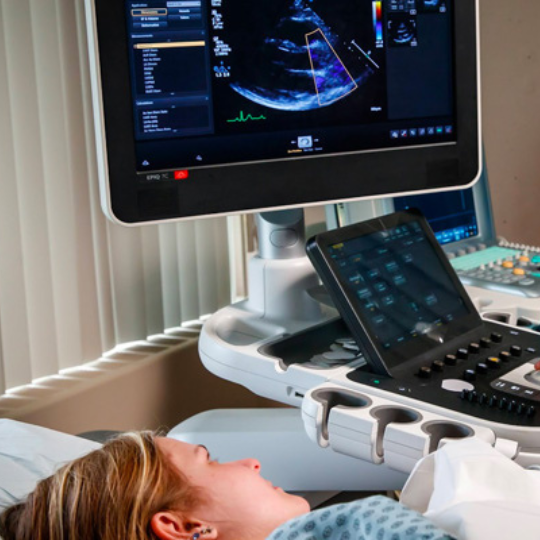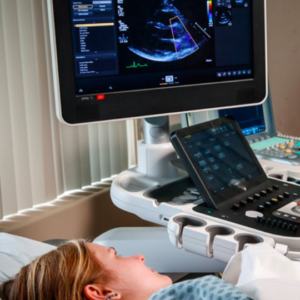- +91 83103 67685
- info@drameetoswal.com
- Basavanagudi
Echocardiogram Doctor in Bangalore | Dr. Ameet Oswal says Echocardiogram is a safe and painless procedure to find out about your heart condition

Echocardiogram Doctor in Bangalore | An echocardiogram is a scan used to visualize the heart and nearby blood vessels. It uses a small probe that emits high-frequency sound waves and detects echoes to generate images on the monitor screen. The test is usually carried out at a hospital or clinic by a cardiologist, cardiac physiologist, or a trained technician called a sonographer.

Echocardiogram Doctor in Bangalore | Dr. Ameet Oswal says, an echocardiogram can help detect certain heart conditions by checking the structure of the heart and surrounding blood vessels, analysing blood flow, and assessing the pumping chambers of the heart.It can be used to find out about the following:
Echocardiogram Doctor in Bangalore | Dr. Ameet Oswal says, An echocardiogram can also help your cardiologist decide on the best treatment for these conditions.
An echocardiogram can be recommended by your cardiologist if you have any of the following conditions:
It can detect these problems and the cardiologist can provide you with the right kind of treatment and medication that you require.
A normal echocardiogram test follows these steps:
Although they have similar names an ECG detects the heart’s rhythm and electrical activity whereas an echocardiogram is used to define the structure of your heart and the blood vessels surrounding it. ECG uses electrical signals and on the contrary, echocardiogram uses echoes of high-frequency ultrasound waves.
The types of echocardiograms found in common use are:
Several small sticky sensors called electrodes will be put on your chest. These will be connected to a machine that monitors your heart and a probe will generate images through ultrasound waves.
A small probe is passed down the throat into your food pipe and sometimes further into your stomach. It is recommended that you may need to avoid eating for several hours before this test.
A sub-type of TTE, but carried out during or just after some exercise on a treadmill or exercise bike, or after being given an injection of a medication that increases your heart performance.
A harmless contrast agent is injected into your bloodstream before carrying out an echocardiogram. This substance helps to create clearer images on the screen because of its high reactivity to sound.
Unlike other diagnostic procedures that make use of radiation to produce results, there are no risks or side effects involved with the use of echocardiograms. It is a non-invasive, simple, painless and safe procedure. However, in a transthoracic echocardiogram, you can expect minor discomfort. You may develop a sore throat, which typically goes away in a few hours. Also in a stress echocardiogram, the risks of heart attacks or other problems during a stress echocardiogram are extremely rare.
Subscribe our newsletter for latest information in the field of cardiology
WhatsApp us